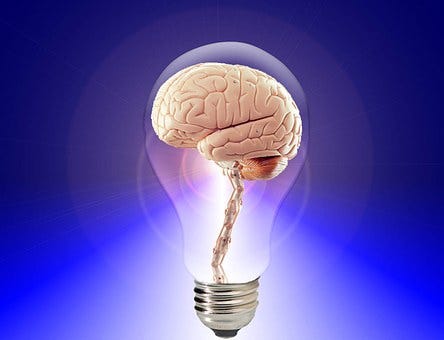
“The Astonishing Hypothesis is that ‘You’, your joys and your sorrows, your memories and your ambitions, your sense of personal identity and free will, are in fact no more than the behaviour of a vast assembly of nerve cells and their associated molecules”.
That is the opening of a book called The Astonishing Hypothesis by Nobel-prize winner Francis Crick¹ on his “scientific search for the soul” (the subtitle). I often come across this quote in books and talks, usually when the author or speaker wants an example of the extreme lengths that materialist science can go to, or, put less kindly, how ridiculous a supposedly intelligent scientist can sometimes be.
Recently, however, I’ve come across someone praising him. Here is Steven Pinker: “The feature (neuroscientists) find least controversial is the one that many people outside the field find the most shocking. Francis Crick called it ‘the astonishing hypothesis’ — the idea that our thoughts, sensations, joys and aches consist entirely of physiological activity in the tissues of the brain. Consciousness does not reside in an ethereal soul that uses the brain like a PDA (personal digital assistant), consciousness is the activity of the brain”².

I hope everyone understands that the last statement is Pinker’s personal belief; I would say his faith, since it is tantamount to a religious statement. It is not science. The fact that most neuroscientists agree does not prove it; it merely indicates the inadequacy of neuroscience to see what is really going on.
I believe that what Pinker rejects is actually the case. The idea that the brain acts as a reducing valve or filter which limits consciousness is a credible hypothesis mentioned frequently, obviously in literature that Pinker doesn’t read.
In The Doors of Perception, Aldous Huxley quotes the Cambridge philosopher C. D. Broad, who suggests that we should take seriously the idea of the French philosopher Henri Bergson: “The function of the brain and nervous system and sense organs is in the main eliminative and not productive. Each person is at each moment capable of remembering all that has ever happened to him and of perceiving everything that is happening everywhere in the universe”³. Joseph Campbell quotes the passage and embraces it⁴, saying that “each one of us is potentially Mind at Large”.
The idea of the reducing valve is also called the Transmission Model, following William James. Other relevant names are Frederic Myers, a founder of the Society for Psychical Research, Henri Bergson as noted above, English philosopher F. C. S. Schiller. A highly relevant book is Beyond Physicalism: Toward Reconciliation of Science and Spirituality⁵. Chapter 3 is called ‘The “Transmission” Model of Mind and Body: a Brief History’. Its author Michael Grosso says: “What emerges is a picture, deeply embedded in the historical psyche of an intuition of mind as primordial and transcendent, mind interactively interwoven with and essentially pervading physical nature. It is an intuition at odds with currently prevailing outlooks that lean en masse toward physicalism”, thus Crick, Pinker, and others like them.
So, it is not just the silly, ignorant public who reject the beliefs of neuroscientists. I hope that these impressive thinkers will be remembered long after Pinker and Crick (apart from his discovery of the structure of DNA) have been forgotten. Crick says: “This hypothesis is so alien to the ideas of most people alive today that it can truly be called astonishing”. Pinker says that “many people outside the field find (this idea) the most shocking”. As is frequently the case, the public’s intuition is probably more accurate than the conclusions of modern scientists. The hypothesis is astonishing because nobody in their right mind could believe it.
“The brain is not the mind; it is an organ suitable for connecting a mind to the rest of the universe”⁶.

================================================================================================
Footnotes:
1. Simon & Schuster, 1994
2. The Mystery of Consciousness, Time magazine, January 19th 2007
3. Vintage Classics, 2004, p10
4. Myths To Live By, Souvenir Press, 1973, reissued 1991, p263
5. Edward Kelly and others, Rowman and Littlefield, 2015
6. Mario Beauregard and Denyse O’Leary, The Spiritual Brain: a Neuroscientist’s Case for the Existence of the Soul, HarperOne, 2007, Introduction, Pxi